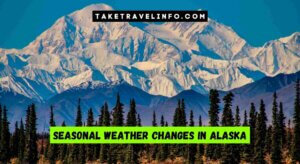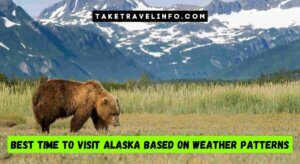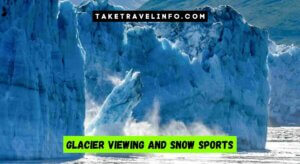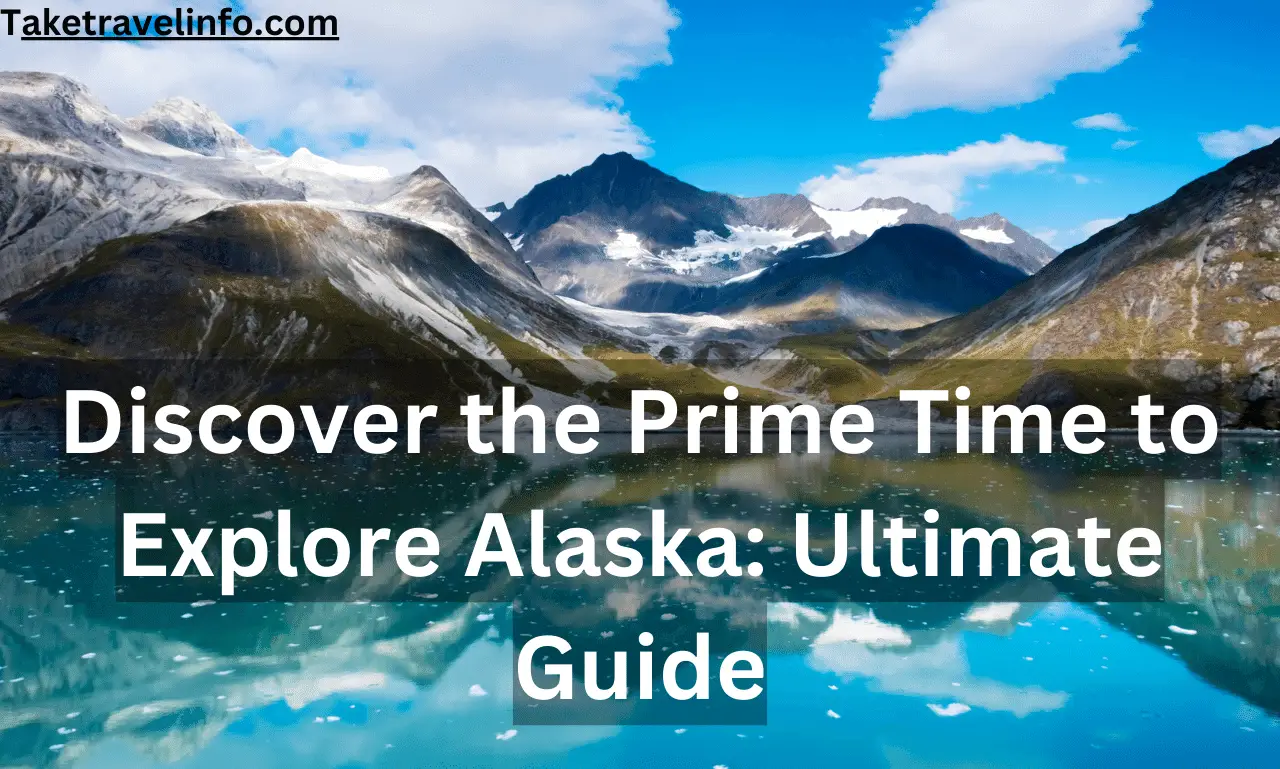The best time to visit Alaska is during the summer months from June to August for warmer weather and longer daylight hours. Alaska, known as the last frontier, is a unique and beautiful state that draws visitors from around the globe.
With its rugged landscapes, abundant wildlife, and incredible aurora displays, it’s no wonder tourists flock to Alaska year-round. However, the best time to visit depends on what activities and experiences you want to have. Summertime in Alaska offers warmer temperatures, longer days, and incredible opportunities for outdoor adventures like fishing, hiking, and wildlife viewing.
On the other hand, the winter months provide the best chance to experience the awe-inspiring northern lights in action. Whether you’re looking for a summer escape or a winter wonderland, Alaska won’t disappoint.
Seasonal Weather Changes In Alaska

Overview Of The Four Seasons
Alaska is known for its distinct seasons, each offering unique experiences for travelers. Below is a brief overview of each season:
- Spring: March to May, cold temperatures begin to warm up, and snow begins to melt.
- Summer: June to August, the days are long and the weather is mild. This is the most popular season for tourists due to the access to outdoor activities.
- Fall: From September to November, the weather begins to cool down, the leaves begin to change colors and fall, and fewer tourists visit the state.
- Winter: December to February, the days are short and cold, but perfect for winter sports and seeing the beautiful northern lights.
Climate And Weather Patterns
The climate of Alaska is subarctic and polar, meaning it’s generally cold, with short warm summers. However, the temperature varies according to the region and season. Here are some weather-related highlights:
- Summer weather varies from the 50s to 80s°f.
- The average temperature in winter ranges from 0 to 30°f in anchorage.
- Most of Alaska’s precipitation is in the form of snow in the winter, and rain and drizzle in summer.
- Alaska receives around 240 sunny days per year, with the most in May and June.
How Weather Affects Travel To Alaska
Weather affects transportation, tour schedules, and outdoor activity. For example:
- In summer, road access to some villages and campsites can be challenging when there is heavy rain or flooding.
- Fall is a popular hunting season, but hunting can be challenging during rainy days.
- During winter, some roads in Alaska are closed, and others are only plowed intermittently, making transportation more challenging.
Best Time To Visit Alaska Based On Weather Patterns
Summer is the best time to visit Alaska, as the weather is mild, transportation is easy, and many outdoor activities, such as hiking, fishing, and whale watching, are open. But it’s also the most crowded, so if you prefer fewer visitors, early fall and late spring are good choices.

Winter is ideal for those who want to experience snow sports, northern lights, and winter festivals.
Alaska’s unique climate and weather patterns make it an interesting destination. Understanding these patterns can help tourists plan their trips effectively. Whether you prefer warmer or colder weather, Alaska’s seasons have something to offer.
Activities And Attractions In Alaska
If you’re wondering what’s the best time to visit Alaska, it ultimately depends on your interests and what you want to see and do. Here are some of the top activities and attractions in Alaska, and the best time to experience them:
Wildlife Watching And Nature Hikes
Alaska is home to some of the world’s most fascinating and beautiful wildlife, including bears, moose, caribou, wolves, and whales. The best time to observe these animals is during the summer, from mid-June to early September. During this period, the weather is warm, and the days are long, providing ample time to explore Alaska’s beautiful parks and wildlife habitats.
Glacier Viewing And Snow Sports
Alaska boasts over 100,000 glaciers, making it an ideal destination for glacier viewing. The best time to see Alaska’s glaciers is from May to September. During this period, the weather is mild, and the glaciers are at their most magnificent.

Snow sports such as skiing, snowboarding, and snowshoeing are also popular in Alaska. The best time for snow sports is from mid-November to mid-April, depending on the location.
Fishing, Hunting, And Camping
Alaska is a haven for angling enthusiasts. With its numerous lakes, rivers, and streams, fishing in Alaska is a year-round activity. Salmon fishing is best from May to September, while halibut fishing is ideal from May to September.
Hunting season in Alaska typically runs from September to December, depending on the game species. Camping season in Alaska runs from may to September, providing ample opportunity to explore Alaska’s stunning wilderness.
Festivals And Cultural Events
Alaska hosts several festivals and cultural events throughout the year, showcasing the state’s rich history, culture, art, and music. Some of the popular festivals include:
- Fur rendezvous festival (February)
- Iditarod trail sled dog race (March)
- Alaska folk festival (April)
- World Eskimo-Indian Olympics (July)
- Alaska state fair (August/September)
Alaska has something to offer visitors year-round, whether it’s exploring its natural wonders, experiencing its unique culture, or enjoying a range of outdoor activities. Keep in mind the seasons and the activities that correspond with them to help plan your unforgettable Alaskan vacation.
Planning Your Trip To Alaska
Alaska is the perfect destination for adventure seekers, with its stunning natural beauty and unique experiences. Planning your trip to Alaska can be an overwhelming task, especially if it’s your first time. You need to consider various factors like transportation options, accommodation types, and costs, availability of amenities and services, visa and safety considerations, and how to plan and budget for your trip.
Let’s delve into each of these factors in more detail below.
Transportation Options To Alaska
Getting to Alaska depends on your location and travel preferences. Here are the available transportation options to Alaska:
- Fly: You can fly directly into Alaska’s major cities like Anchorage, Fairbanks, and Juneau from any major city in the US.
- Cruise: Taking a cruise to Alaska is a popular option, where you can experience the breathtaking views of glaciers, wildlife, and the northern lights.
- Drive: If you are an adventure lover, you can drive to Alaska, but you will need to plan the routes and expect a long journey.
Accommodation Types And Costs
Choosing a place to stay in Alaska depends on your budget and preferences. Here are the types of accommodation available in Alaska and their costs:
- Hotel: There are plenty of hotels in Alaska, ranging from luxury resorts to budget-friendly options. The cost of a hotel depends on the location and the level of luxury you are looking for, but the average price is around $150 per night.
- Cabin: Alaskan cabins offer a unique and cozy experience, with most of them located in remote locations. The average cost of a cabin ranges from $75 – $300 per night, depending on the location and amenities.
- Camping: Alaska is a camping destination, offering breathtaking scenery and wilderness experiences. The cost of camping ranges from $10 – $30 per night, depending on the location.
How To Plan And Budget For Your Trip

Planning and budgeting for your trip to Alaska is essential to ensure a stress-free and enjoyable experience. Here are some tips to consider:
- Determine your travel style: Decide if you want to take a luxury or budget-friendly trip.
- Research: Research the available activities and attractions, and note their cost to budget accordingly.
- Allocate sufficient time: Alaska is vast, and you will need enough time to experience its natural beauty.
- Create a budget: It’s vital to create a budget that covers the cost of transportation, accommodation, food, and activities.
Planning a trip to Alaska is a unique and unforgettable experience, and following these tips will ensure a smooth and enjoyable trip.
Frequently Asked Questions Of Best Time To Visit Alaska
When Is The Best Time To Visit Alaska For the Northern Lights?
The best time to witness the northern lights in Alaska is from September to April during the winter season. However, the peak viewing months are during December and January, with a clear view on a cold and dark night.
When Is The Best Time To Visit Alaska For Salmon Fishing?
The salmon run in Alaska starts from May to September, making it the best time to fish for salmon. However, the peak season varies depending on the type of salmon. King salmon peaks in late June and early July, while silver salmon peaks in August and early September.
What Is The Best Time To Visit Alaska For Wildlife Viewing?
The best time to visit Alaska for wildlife viewing is during the summer months from May to September. The best places to visit are denali national park, katmai national park, and kenai fjords national park to see brown bears, moose, caribou, and whales.
When Is The Best Time To Visit Alaska For Hiking?
Summer, specifically June to August, is the best time to visit Alaska for hiking when the weather is warm and the trails are snow-free. The sunlight also lasts longer enabling you to explore the Alaskan wilderness in the evening.
What Is The Best Time To Visit Alaska For Cruise Tours?
The best time to visit Alaska for cruise tours is from May to September during the summer season. The months of June and July offer the longest daylight hours which is best for sightseeing cruises. However, be prepared for some chilly weather and occasional rainy days.
Conclusion
Alaska is a dream destination for nature lovers, adventure-seekers, and photography enthusiasts. With its majestic glaciers, unique wildlife, and northern lights, it’s easy to see why Alaska is such a popular destination. However, choosing the best time to visit can be challenging due to the state’s unpredictable weather patterns.
Ideally, you should consider your interests and preferences before planning your Alaskan vacation. Whether you are visiting for fishing, hiking, or enjoying the stunning landscapes, each season has something unique to offer. Summer is the peak tourism season for Alaska, while winter is known for its snow-covered landscapes and abundant northern lights.
Spring and fall present equally breathtaking scenery, with mild weather, migratory birds, and diverse wildlife sightings. Regardless of when you decide to visit, Alaska promises to offer visitors a truly unforgettable experience. So, pack your bags, book your tickets, and embark on the adventure of a lifetime in this breathtaking state.

